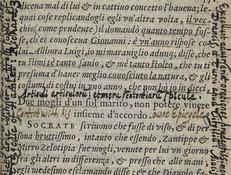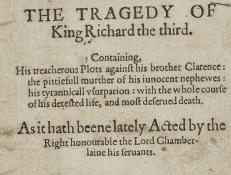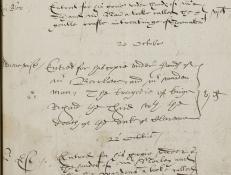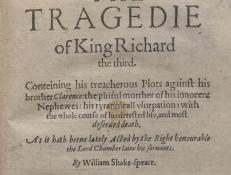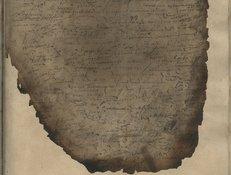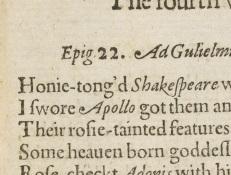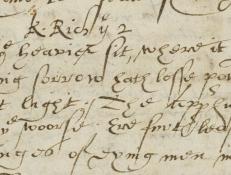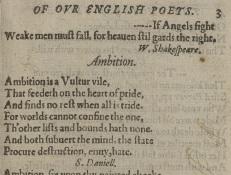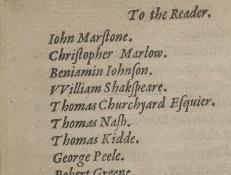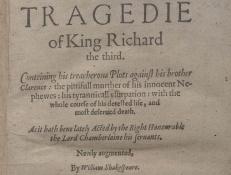To view a sortable list, please visit the Resource
All Documents
ca. 1580-1608?
The scholar and writer Gabriel Harvey was known and mocked in his lifetime for making copious notes in the margins of printed books. An inventor of words, friend of Edmund Spenser, and rival of Thomas Nashe, he constantly sought to improve himself through note-taking and repetitive reading.
1597
Richard III was first printed in 1597, and the title page enumerates the various exploits to be found within, including Richard’s “treacherous Plots,” the “pittiefull murther of his innocent nephews,” his “tyrannicall vsurpation,” and of course h
October 20, 1597
Richard III was entered into Liber C of the Stationers' Company on October 20, 1597.
1598
Richard III was an immediate success in the bookshops of London. Andrew Wise published the first edition in 1597, and copies seem to have sold out very quickly, since he published the play again the next year, in 1598, as shown here.
ca. 1598
SHAKESPEARE DOCUMENTED IS STILL GROWING! Descriptive content and transcriptions will continue to be added, updated and expanded. Check back for regular updates!
1599
John Weever’s Epigrammes in the oldest cut, and newest fashion was published in 1599. Weever began his career as an aspiring poet and literary observer at Cambridge, where he was the student of William Covell at Queen’s College.
ca. 1600
SHAKESPEARE DOCUMENTED IS STILL GROWING! Descriptive content and transcriptions will continue to be added, updated and expanded. Check back for regular updates!
1600
Englands Parnassus is one of two printed commonplace books, or collections of extracts organized by topic, compiled by Robert Allott, and was printed shortly after John Bodenham’s Bel-vedére.
1600
Like other plays from the period, Shakespeare's plays were meant to be read both as stories and as sources for sententiae, or memorable aphorisms.
1602
This is the third edition of Richard III, printed in 1602. It is the second of two editions printed by Thomas Creede for Andrew Wise. On June 25, 1603 Wise transferred the rights to the play to Matthew Law.

